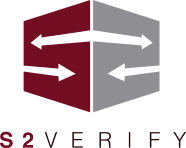Find Out What Every Great Onboarding Program Has In Common
While up to 20% of employee turnover happens within the first 45 days, 69% of employees are more likely to stay with a company for three years if they experience a great onboarding process.
That means onboarding is make or break for employers everywhere–especially in today’s labor market.
Monday, on the blog, this series covered why quality onboarding is key for employee engagement and long-term retention.
Today, learn what a quality onboarding program looks like so you can create an onboarding experience that engages candidates from the start and makes them more likely to stay (and be productive)!
Key Considerations for Successful Onboarding
Gone are the days of “new employee orientation” or simple, standardized job training. Onboarding is now about so much more. As we shared last week, great onboarding that kickstarts engagement and retention is about making sure the employee’s organizational, technical, and social needs are well met.
Organizational Considerations
Onboarding is an opportunity to teach new employees “how things work”–the ins and outs of what it means to work at your organization each day in the employee’s specific role. Here are a few key organizational steps to include in your quality onboarding process (if applicable):
- Complete essential paperwork necessary for payroll, taxes, etc.
- Provide login credentials for all necessary platforms
- Share parking information, identification needs, and other details about your workplace
- Educate new employees on how to enroll in health benefits
- Share workplace regulations and policies (via an employee handbook if possible!)
- Get buy-in to your brand, values, and mission and go over company culture and background
- Make sure new employees understand the structure of the organization (and who to go to for what)
Technical Considerations
Even if you hire someone for their capabilities and experiences–that doesn’t mean they’ll know how to deploy those skills at your company. Every role is different, and it’s up to you to contextualize the work during onboarding–so new employees know what to expect and feel like they’re set up for success from the start.
Here are a few key technical steps to include in your quality onboarding process (if applicable):
- Provide new hires with a clear job description
- Outline key accountabilities for the role
- Clarify their decision-making authority (and limits)
- Set short-term goals for new hires (so they can get some early wins)
- Be transparent about career pathing from the start
- Share opportunities for continued learning and where to find role-specific resources
Social Considerations
Recently, economists across the country have been reporting on loneliness at work and how new hires that feel isolated from the start are more likely to leave that job. Consequently, it’s critical to help new employees build a network within your organization that makes them feel supported from the start.
Here are a few key social steps to include in your quality onboarding process (if applicable):
- Incorporate current employees (executives, superiors, peers) into the onboarding process so they can connect “organically” with new employees via trainings, presentations, and more
- Set up a scheduled time for new employees to meet with superiors, peers, and direct reports–particularly those who they will be working with on a regular basis
- Be clear about what company meetings and events the new employee is expected to attend
- Provide new employees with an onboarding partner (current employee) who can help them acclimate
The #1 Thing That All Great Onboarding Processes Have In Common
Great technology.
Even if the above organizational, technical, and social needs are well met during the early stages of the employee lifecycle, your onboarding is only as powerful as the method of delivery.
Today, that method of delivery–for companies that successfully engage and retain talent during onboarding–is technology, “employee onboarding platforms,” to be exact.
Employee onboarding platforms can help expedite the communication, content creation, and coordination involved in turning hired candidates into employees. Essentially, this kind of technology can help you dot your i’s and cross your t’s when it comes to the onboarding processes.
Solutions like SwiftHire by S2Verify help you bring more standardization to onboarding via digitized forms, customized branding, and a way to track candidates’ progress on the back end.
Ultimately, employee onboarding technology can help you engage new hires with an experience that’s quick, easy, and professional–while cutting down on time and labor required from current employees to execute.
It can amplify your engagement efforts and potentially increase the likelihood that a candidate will stay by nearly 69%.
Click here to learn how S2Verify helps employers design and execute a high-quality onboarding program–and discover our suite of tools designed to kickstart engagement and retention even earlier in the employee lifecycle.







